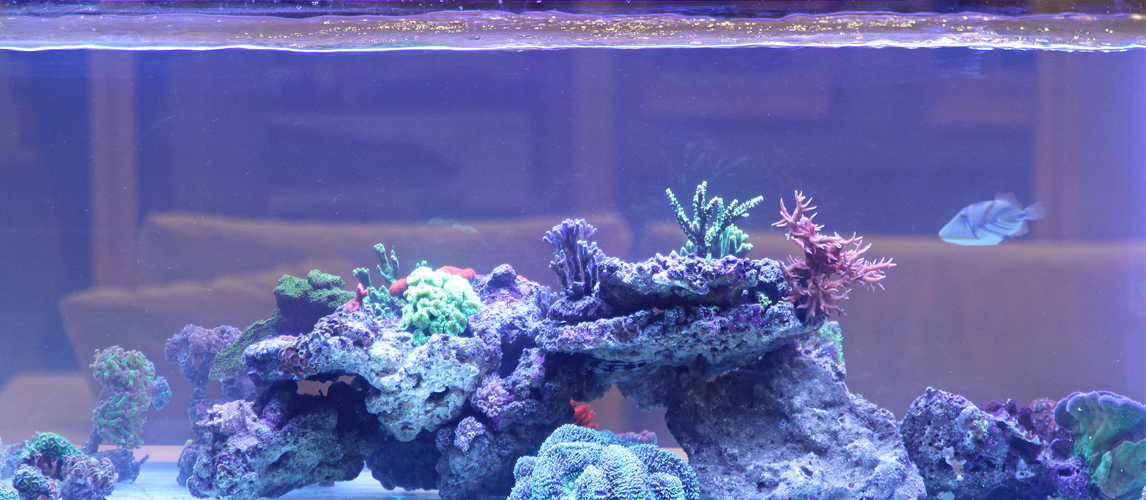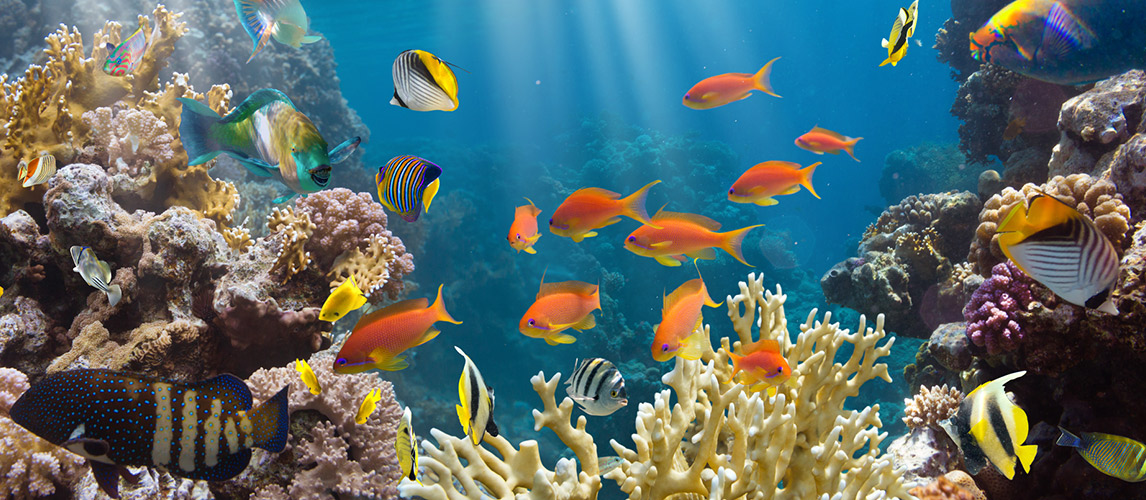This is a guide to live rock and dry rock that you can put in to your aquarium. This guide will allow aquarium hobbyists to make the best decisions regarding what is the best type of rock to put in their aquariums to ensure the health and wellbeing of all the inhabitants within the aquarium itself. The guide will also point you in the right direction of what the drawbacks are to both live and dry rock so that any decisions you do make with regards to the makeup of your aquarium are well informed. It’s important to remember there is no right or wrong answer – for while live rock does comes with its advantages which we will discuss below, it may not be right for you and your aquarium for a number of reasons. This is the same for dry rock too.
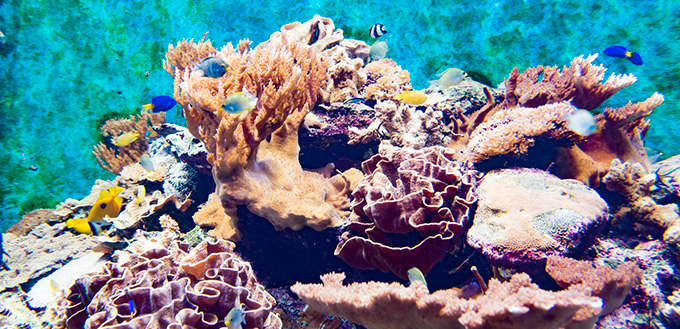
What is Aquarium Live Rock?
Live rock can play an essential role in the maintenance of your aquarium and the overall health of the fish and other creatures within it. But what exactly is it? Live Rock is simply rock or reef that you can put in your aquarium that will be able to house many different types of animals and organisms that live within your tank. Some of those organisms are ones that you cannot see, but will provide an overall benefit to how clean your water stays and other advantages.
Live Rock is made out of a variety of different substances. The main being calcium carbonate but it can also be made from old, dead doral or even synthetic materials like concrete. In short, live rock is what is actually found in our seas and provides a home to so many creatures in our oceans. For that reason, they can be fantastic to add to your aquarium to keep your own fish happy and healthy.
The Major Benefit To Live Rock
Above all, one of the best advantages to adding live rock to your aquarium or tank is that it acts as a natural filtration system. Given that aquariums are not only small, but closed ecosystems, any way that you can help the filtration of the water within it is a huge plus point. It means that all the food that you give to your fish, that you add consistently throughout the week, will be filtered out somehow and able to leave your tank’s water without causing any toxic growth or mold or otherwise. This is what helps keep your fish and other aquarium creatures to stay healthy and live a much longer life within your tank.
Related Post: Best Aquarium Water Test Kits
Live rock is able to do this by helping to break down the food that you put in so that it can exit the tank more easily. It does so by playing a part in the necessary nitrate cycle that is a constant battle for some aquarium hobbyists to stay on top of. The nitrate cycle starts by the smallest inhabitants of an aquarium eating the smallest particles of food left by fish, or even fish waste. From there, those waste particles are then converted into ammonia, phosphate and finally nitrate. Ammonia and phosphate can all be toxic within wiater, but live rock will convert these chemicals into more nitrate which can be ingested by algae or bacteria that is within the rocks. In doing so, nitrates are then turned into nitrogen gas which can then leave the aquarium’s water via the water surface.
Other Benefits To Live Rock
Live rock is also fantastic for your fish as it can act as a home to them as well as any other marine life in your tank. It therefore is able to provide a high level of protection for them that they may need in the form of shade but also if a fish needs a marine nursery for any offspring, live rock is a brilliant place for them to do so. Additionally, it can act as a food source as well as providing shade to inhabitants when required. Fish that live within a tank that has live rock as opposed to nothing at all have been seen to be less stressed and therefore live longer lives as they also become less vulnerable to illness and disease.
Finally, live rock simply looks great within an aquarium. Because it is natural, it looks like the ocean should do so it is an easy way to get your aquarium looking wonderful in no time at all.
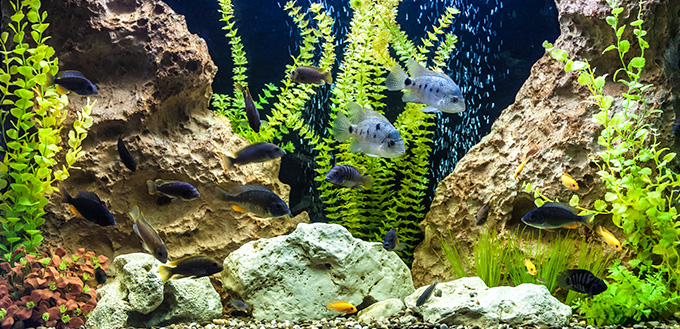
Cons To Live Rock
The big disadvantage to live rock is that you are never quite sure what you are going to get and this can mean that you get a few organisms in your water that you did not bargain for. This means that you may inadvertently add a mantis shrimp to your tank or even unwanted anemones that spread too quickly to control. There are a number of ways to ensure that these infestations never become a huge problem that affect the life of the fish that you do want in your tank, but they can be a hassle to sort out as well as time consuming.
What Is Aquarium Dry Rock?
Dry rock is simply live rock that has been treated. This means that it has been dried and cleaned before it is sold for use. The result is that dry rock does not look quite so lived in as live rock does so the visual impact that it has within your tank is not as great. While this will change gradually over time as algae will grow on it, it can be enough of a reason for a hobbyist to choose live rock over dry rock every time.
The Benefits of Dry Rock
There are a couple of immediate benefits to dry rock, especially when compared directly to live rock. The first is that dry rock is cheaper than live rock. The reason is its cheaper is that it is easier to get hold of for suppliers and it also weighs less thanks to having been cleaned. This ultimately drives down the price, which can be a major factor in deciding what to add to your tank.
Secondly, dry rock is popular as customers know what they are getting. There is no fear of introducing an unknown organism to your tank and any delicate biological balance you are trying to set up. This is because they have been cleaned thoroughly before selling them to final customers.
The Negatives to Dry Rock
The main con with dry rock, as previously alluded to, is that it simply does not look as good as live rock. Dry rock looks pretty bare when it is first purchased and it takes a while for algae and other interesting organisms to grow on its surface to create color and interest. While this may not be a problem for some aquarium fans, the look of how a tank appears is often a big draw to having an aquarium in the first place, so it is a big drawback for many. Plus, while the algae that does grow on dry rock is helpful to a tank’s biological balance, the algae on live rock is the sort that tends to be best for aquariums specifically.
Ultimately, however, it works just as well as a filtration system as live rock does, which is perhaps the most important factor when installing either type of rock into your tank.
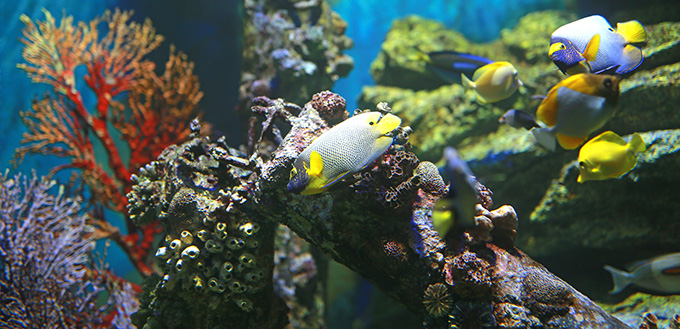
Live Rock: The Ultimate Guide to Aquarium Live and Dry Rock – The Bottom Line
It is therefore up to the aquarium enthusiast to decide what is right for them and their fish when it comes to what type of rock to add to their tank. As mentioned, both work well as natural filtration systems and they both look great when compared to man made systems, it is just that live rock looks immediately better than dry rock does. That being said, dry rock starts to look fantastic after a while and it is that much cheaper than live rock, so it can be worthwhile saving some pennies in the long term for a little short term pain. Both will play a vital role in the health and the happiness of the fish within your tank and are ultimately a great addition to your tank’s overall filtration system.
Sources:
- How to Clean a Fish Tank, PetMD
- How to Set Up a Saltwater Aquarium, HowStuffWorks


